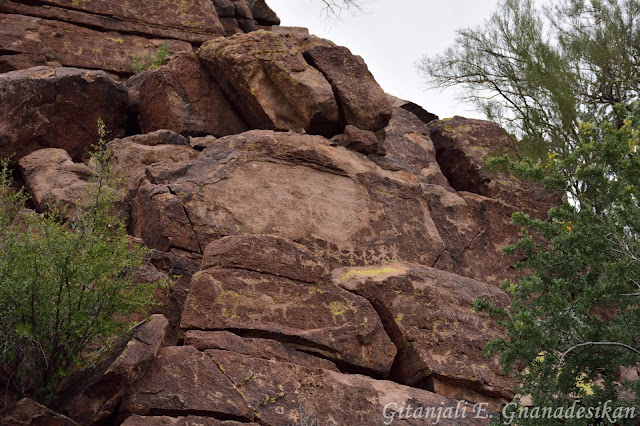One of the most interesting things about living in the Southwest--especially compared to other parts of the United States--is the visible prehistory. Petroglyphs are just one example; ruins such as Casa Grande or Montezuma Castle are just a few of the more famous sites in the region. Here are two less famous local petroglyphs sites within an hour of Tucson.
The first is Picture Rocks, on the grounds of the Redemptorist Renewal Center. Luckily, they don't mind visitors and will even point you in the right direction.
The petroglyphs are on a small hill and seem to cover most of the visible rock faces. Apparently, there are well over a hundred panels containing rock art, with the majority on the west-facing side of the hill.
How many do you see?
It probably comes as no surprise that I have a particular soft spot for the zoomorphic ones.
The second site is just a little ways to the south in Saguaro National Park, on the Tucson Mountains (west) side, at a site called Signal Hill. It is an easy walk from a picnic area, but you can make it part of a longer hike if you wish.
This is the iconic spiral often pictured in association with Signal Hill. The spiral is a common petroglyph form, and actually even more broadly, it's a common motif in prehistoric art globally.
I think the hominoid-looking petroglyphs at Signal Hill are often overlooked because they're slightly separate from most of the others and best seen from a few hundred feet down the wash.
While the petroglyphs were, of course, spectacular, this flower also caught my eye. It's beautiful, slightly odd looking, and quite distinctive.
It was an easy one to identify: a lyreleaf jewelflower (Streptanthus carinatus), a member of the brassica family. And what a great name, huh?















No comments:
Post a Comment
Thoughts, reactions, or comments? I always love to hear from you!